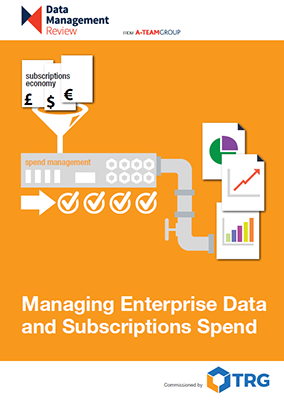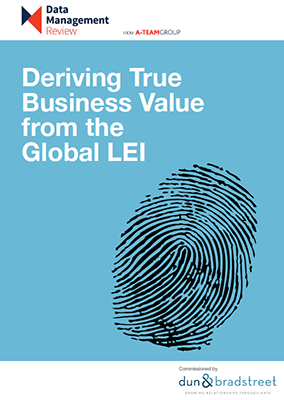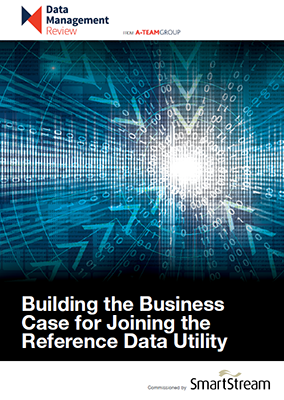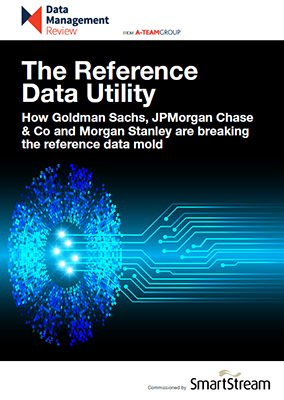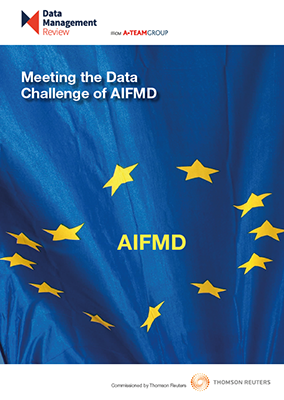Data Management Insight White Paper
Managing Enterprise Data and Subscriptions Spend
Financial institutions consume a broad range of services on a subscription basis to meet their business needs. These include market data and electronic information services, subscriptions for print and web-based publications, and increasingly, consultancy, software, hardware and telecommunications services. As consumption rises, so too can costs, calling on firms to take a proactive approach to...
Harmonising the Approach to Regulatory Compliance
Regulatory compliance is key to financial institutions, but it can be costly and difficult to achieve in an environment where new regulations are constantly on the horizon and must be implemented efficiently and effectively. This White Paper, sponsored by Thomson Reuters and based on a survey of close to 70 senior data managers, discusses how...
Deriving True Business Value from the Global LEI
The Legal Entity Identifier (LEI) – the free-to-use entity identifier – has established itself as a viable standard for helping financial institutions identify unique business entities that are parties to financial transactions. But it’s widely accepted to have its limitations. In particular, a lack of standardization and ability to link to associated data sets is...
Building the Business Case for Joining the Reference Data Utility
The benefits of joining a reference data management utility include the ability to improve data quality, simplify complex data management infrastructures, meet constantly expanding and changing regulatory requirements, and realise significant reductions in operating costs. This White Paper, sponsored by SmartStream, describes four business cases that can be addressed by adopting a utility-based approach to...
Entity Data Quality: New Approaches and the Four Categories of Data Quality Management
Legal entity data is critical to data strategy, business decisions and regulatory compliance, but it can be a challenge to ensure the data is accurate and reliable as the entity universe is large, millions of attributes change every year and inconsistent codes and symbologies identifying entities, corporate hierarchies and ultimate beneficial owners must be managed....
8-Step Guide to Choosing the Right Market Data Inventory Platform
Market data inventory platforms have been used by financial institutions to track, manage and control market data for decades, but as technology has developed, so too have inventory platforms, raising questions about the capabilities of current solutions and pointing to the possibilities of migrating to more modern platforms. This White Paper, sponsored by TRG, considers...
The Reference Data Utility: How Goldman Sachs, JPMorgan Chase & Co and Morgan Stanley are breaking the reference data mold
The Reference Data Utility (RDU) built by SmartStream and backed by Goldman Sachs, JPMorgan Chase & Co, and Morgan Stanley is up and running and ready to deliver reference data management services to the banks. The concept of multi-tenant data utilities is not new, but none have achieved buy-in at the level of the RDU,...
Meeting the Data Challenge of AIFMD
The Alternative Investment Fund Management Directive (AIFMD) came into effect in 2013. Most financial institutions within its scope, particularly hedge funds and firms that service those funds, have since completed the majority of work required to meet their obligations under the regulation, but some thorny data management issues remain. Hedge funds are challenged by the...
Navigating BCBS 239 and the New Stress-Testing Regime
Rigorous stress testing – and emerging regulations like Basel’s BCBS 239 – mean that the risk and finance functions can no longer act in isolation. Regulators are increasingly seeking a true, holistic view of risk. To deliver on the new requirement, banks need to reinvent their infrastructures and operating models, making sure all elements of...
Tracking bonds for Solvency II’s Matching Adjustment
How are you tracking bonds that are eligible for Solvency II’s Matching Adjustment (MA)? With the January 2016 deadline looming, insurance companies and the asset managers that service them need to be able to identify eligible assets in their portfolio. But there’s no single list, rather a set of criteria to be followed, resulting in...


